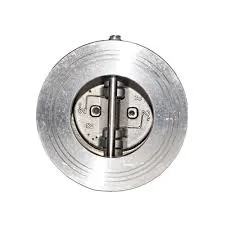
- Call Us
- +8618633052223
- njhdvlz@163.com
Aug . 28, 2024 08:14 Back to list
High-Quality Check Valves for Water Tanks - Reliable Manufacturers
Understanding Check Valves for Water Tanks A Guide for Manufacturers
Check valves are essential components in various applications, particularly when it comes to managing water tanks. They play a crucial role in preventing backflow and ensuring that water flows in one direction only. This article explores the significance of check valves, their functionality, and considerations for manufacturers in the water tank sector.
What is a Check Valve?
A check valve is a mechanical device designed to permit fluid (such as water) to flow through it in one direction while preventing any reverse flow. This is vital in water management systems where backflow could lead to contamination, system inefficiency, or damage to equipment. Often employed in water tanks, these valves ensure that water pulled from a tank does not return to it, maintaining pressure and water quality.
The Importance of Check Valves in Water Tanks
1. Prevention of Contamination One of the primary reasons for installing check valves in water tanks is to prevent the mixing of clean and contaminated water. In application scenarios where multiple tanks are interconnected, a check valve safeguards the quality of the primary water source.
2. Flow Control Properly functioning check valves ensure that water flows seamlessly, preventing situations where reverse flow could disrupt supply. This control is critical in maintaining the integrity of water distribution systems.
3. System Longevity By preventing backflow, check valves can help prolong the lifespan of pumps, tanks, and piping systems. This reduces maintenance costs and the risk of requiring system replacements.
4. Pressure Maintenance Check valves help maintain consistent pressure levels within water tanks. This is particularly important in systems where water flow needs to be regulated based on demand.
check valve for water tank manufacturers

Considerations for Manufacturers
As manufacturers of check valves for water tank applications, understanding specific requirements and industry standards is vital. Here are some key considerations
1. Material Selection The choice of materials used in check valve manufacturing is crucial. Valves must be made from corrosion-resistant materials that can withstand prolonged exposure to water and varying temperatures. Common materials include stainless steel, PVC, and brass, each with its unique advantages.
2. Design Types Different applications may require various designs of check valves. Manufacturers should be familiar with swing check valves, lift check valves, and dual plate check valves to offer tailored solutions to their customers.
3. Flow Ratings It's essential for manufacturers to provide valves with appropriate flow ratings that match the specific requirements of the water tank systems. Accurate specifications help in ensuring efficiency and optimal performance.
4. Testing and Certification Quality assurance is paramount in manufacturing check valves. Manufacturers should implement rigorous testing protocols to ensure durability and reliability. Certifications from recognized standards can help build trust with customers and facilitate market acceptance.
5. Sustainability Practices With an increasing focus on environmental sustainability, manufacturers should consider eco-friendly practices in the production of check valves. This includes using recyclable materials and processes that minimize energy consumption.
Conclusion
Check valves are crucial in managing water flow and maintaining the quality of water tanks. For manufacturers, understanding their importance and implementing best practices in design, material selection, and testing can lead to the production of reliable and high-quality check valves that meet the demands of modern water management systems. By focusing on innovation and sustainability, manufacturers can contribute to safer and more efficient water usage worldwide.
-
Stainless Steel Sanitary Butterfly Valve for Hygienic Flow Control
NewsJul.30,2025
-
High-Performance Groove Butterfly Valve for Easy Installation
NewsJul.30,2025
-
High-Quality 2 Inch Butterfly Valve for Precise Flow Control
NewsJul.29,2025
-
Double Flanged Short Pattern Butterfly Valve for Reliable Flow Control
NewsJul.29,2025
-
High Quality Wafer Check Valve Factories – Reliable Manufacturer & Supplier
NewsJul.29,2025
-
Stainless Steel Sanitary Butterfly Valve for Hygienic Applications
NewsJul.28,2025